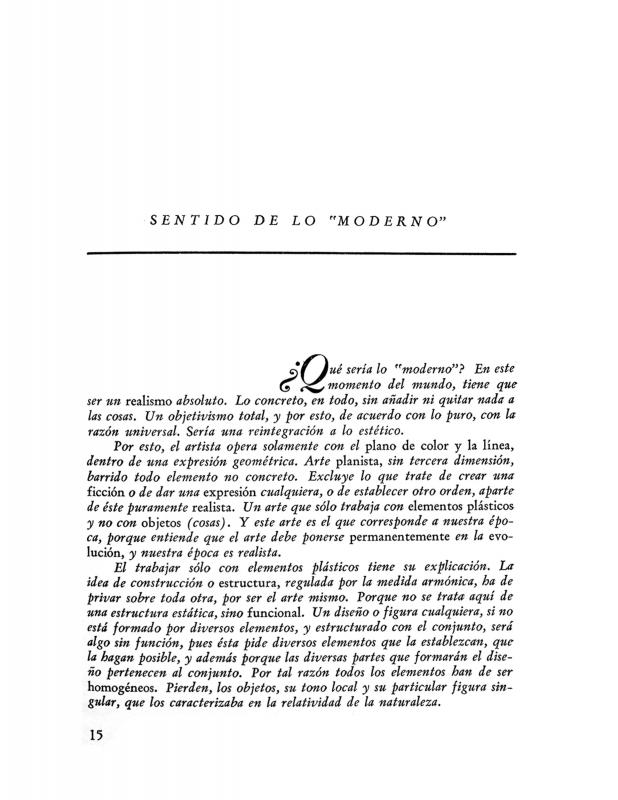According to Joaquín Torres-García (1874–1949), the symbol represents a concept, an idea, but he saw no need for a narrative, which he believed interfered with the unity of the work. The maestro saw the union of “idea” and “form” as a link between the tangible and the abstract, between the visible and the idea. Torres-García created a style by inserting the symbol (that had accumulated humanistic values with a long tradition) into the rational structure of neoplasticism, thereby defining his constructive universalism. In his article Torres-García mentions this quote (without naming the source): “Man has been deceived by the idea of progress.” Here, once again, we see the maestro’s profound rejection of the idea of “modernity” and the process of “civilization” as a result of his opposition to the existential materialism of contemporary man. Torres-García’s students have said that, on more than one occasion, he ripped their compass out of their hands. These reports are interesting in light of some of Torres-García’s statements in “Reflexiones,” in which he claims that it is pointless to use a compass for mechanical purposes when his goal is to teach the artist how to “feel the measurement,” how to “feel the geometry.” That “feeling” is an appeal to non-rational, unconscious mechanisms to internalize geometry in the sense of internalizing the metaphysical dimension of time and of existence itself. In Torres-García’s opinion, the artist’s religiosity is the act of feeling that “supreme unity.” Religion therefore took the place of metaphysics in the void between the eternal and the circumstantial. His historical interpretation of this matter pinpoints the fifteenth-century European Renaissance as the moment when painting stopped respecting the plane in order to “open a window.” When the metaphysical approach was rejected in favor of physics, a process that was later described as “scientific progress.” The cultural version emerged in the twentieth century in Torres-García’s philosophy. It is a degrading factor in the human condition, which can only be reversed by art. Torres-García here returns to the utopian idea of “changing life” through art with a deeply mystical connotation. He believed in the construction of a community of converging ideals and practices that would have a broadening effect on society.
[As complementary reading see, in the ICAA digital archive, the following articles written by Joaquín Torres-García: “Con respecto a una futura creación literaria” (doc. no. 730292); “Lección 132. El hombre americano y el arte de América” (doc. no. 832022); “Mi opinión sobre la exposición de artistas norteamericanos: contribución” (doc. no. 833512); “Nuestro problema de arte en América: lección VI del ciclo de conferencias dictado en la Facultad de Humanidades y Ciencias de Montevideo” (doc. no. 731106); “Introducción [en] Universalismo Constructivo” (doc. no. 1242032); “Sentido de lo moderno [en Universalismo Constructivo]” (doc. no. 1242015); “Bases y fundamentos del arte constructivo” (doc. no. 1242058); and “Manifiesto 2, Constructivo 100%” (doc. no. 1250878)].








